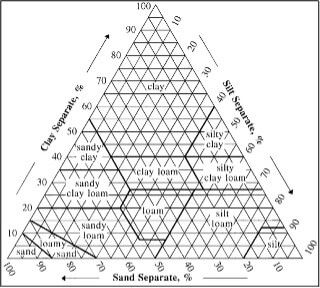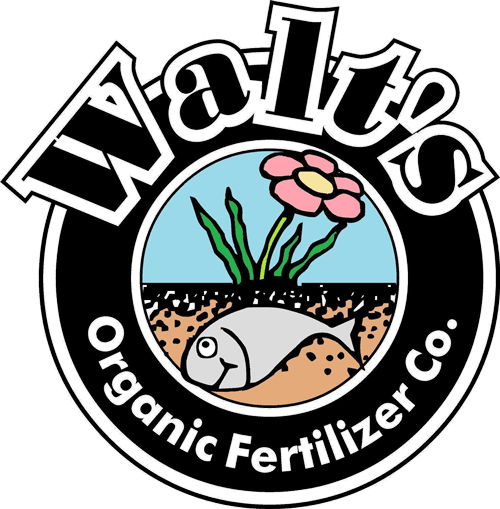Although shouts of “happy new year” have faded, it’s still the gardening new year. Those dormant bulbs are stretching up their fresh green shoots and tender leaves are starting to bud out. Whether you are a well-seasoned gardener with years of experience or are still trying to figure out your green thumb, make this your best gardening year yet.
We garden for many reasons, and not everyone’s reasons are the same. Take some time to really think about why you garden. Do you love growing your own food? Watching wildlife share your space? Grow award-winning dahlias? Thinking about why you garden can help recenter you and figure out how to make your garden and yourself happier and healthier.
The team here at Walt’s Organic Fertilizer Co. is excited to share ten ideas for you to try. These ideas will be shared over three blog posts, so check back next week for the next set.
1. Get to Know Your Garden
Nature, including our gardens, is dynamic. Over time plants grow (shocking!), and this changes where the sun reaches and what nutrients are available in the soil. Some people prefer a well-manicured and precise garden, while others enjoy a more jungly vibe. Getting to know your garden in its current state will help you create the garden of your dreams.
Creating a sketch, painting, or map of your garden allows you to make notes and create a plan. Observe your garden throughout the day and pay attention to what areas are in full shade, mostly shade, mostly sun, and full sun. While all plants need water, not all plants require the same amount of water. Investigate to see what areas receive the most rainfall, i.e. what parts of your garden have tree canopy above them and which are open. Are there areas of depression in your space? If so, these may hold water in the soil for longer than higher ground or a slope. Finally, get your hands dirty in the soil. Different plants thrive in different amounts of clay, organic matter, and sand. Your garden may have one type of soil throughout or patches of different soil textures.

Soil texture chart from USDA.
Once you familiarize yourself with your garden’s sun, water, and soil, you can start looking at what is growing there. On your garden map, start big and work your way down. Mark out trees and large shrubs first, then work your way into the understory, and finish off with delicate herbaceous plants. There is no need to draw each and every plant growing but use enough level of detail so that you can visualize your garden just by looking at your map. Bulbs and annuals can make things a little trickier since they are not visible year-round. Arrows and color shading can be used to remind yourself where you put the scented geraniums in the summer and where the tulips pop up in the spring.

Garden map drawn with crayons.
After you have captured your current garden on paper, you can start planning out changes you want to make. Use sticky notes, number correlation, or cut-outs to help you play around with your vision for your garden’s future. A key phrase to remember while planning is “right plant, right place.” Each plant species has unique requirements, and simply because you want lavender to grow in a shady place does not mean it will be happy there. Also, keep in mind that plants continue to grow and unless you and your shears plan to be on constant patrol, install plants in an area where they can mature into their natural size.
2. Reduce Your Lawn
While a perfect lawn for many people is a sign of success, lawns negatively impact the environment. Grass likes sun, and the less sun your yard has, the more of a struggle it is to keep it lush and green. Keeping a lawn in pristine condition requires a lot of maintenance, excessive watering in the summer, and creates a constant battle against unwanted plants and animals who want to take up residence in it.
Many of us Seattleites have canine companions, so the idea of no grass tends to be frowned upon. While you certainly do not need to rip up your entire lawn, you can extend your garden borders out a bit further or even install a patio with a permeable substrate such as flagstones with sand. You can leave a little potty corner for your pooch while still reaping the benefits of a refreshed outdoor living space.

Nimbus, the border collie, is just happy to be outside.
If you are interested in redesigning your current yard, let Walt know. Our landscape crew will help you design, install, and maintain your outdoor spaces.
3. Choose a Sit Spot to Enjoy Your Garden
While quarantine may have slowed our lives down a bit, many of us are still plenty busy. To help slow things down, get centered, and truly appreciate your garden, pick out a sit spot. A sit spot can be anywhere in your garden: a patio chair, a paving stone in a path, or right down on the soil. Once you have chosen your sit spot, visit it as often as possible; starting once a week is usually manageable. Spend two or more minutes just sitting there. Close your eyes and listen to the sounds of your garden, pay attention to what is living in the space immediately around you, and just be part of your garden.
To increase the benefit of visiting your sit spot, start a journal. Make a drawing or a couple of notes about each visit. Continue visiting throughout the year to help get to know your garden through all seasons. You are to be surprised by what you discover when you take a moment to be a part of your garden.
Sit spots are also a fantastic activity for children of all ages. You can challenge them to stay in their spot and be silent for a minute, then two minutes. If you repeat this activity, you can challenge them to remain in their sit spot longer than the time before. This activity teaches them to use their senses, have self-control, and practice making scientific observations.
With a little thought and some effort, you can use 2022 to take your garden to the next level. Our team at Walt’s Organic Fertilizer Co. is here to help you along the way. Stop by the garden shop for plants, compost, organic amendments, and whatever else you may need. You can also order our products on Amazon.
